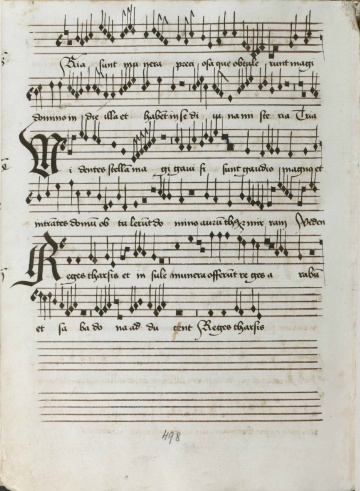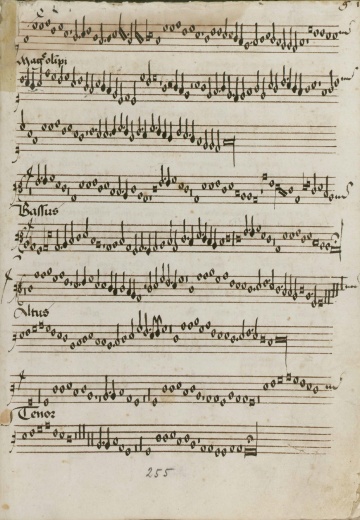Polyphonic music
A specific and altogether unique attribute of musical culture in the Czech lands in the 15th century is the conscious cultivation of musical forms and styles that have their roots in the circle of the Prague university at the end of the 14th century and which we encounter in surrounding countries only exceptionally after 1450. Stimuli from abroad penetrated the intellectual environment both in the form of specific musical forms (motet, cantilenas) and as part of theoretical treatises on mensural notation. After the Hussite Wars (1419–1434), when the university is reopened and the Utraquist Church is being formed, the pre-Hussite repertoire along with new compositions by Central European authors from the period of roughly 1420–1450 become the "family silver" of the Czech Utraquists, the foundation for their later liturgical repertoire and the bearer of the cultural identity of the new institution. On the other hand, the Czech lands become one of the areas which in the second half of the century joins the recipients of a new musical style, known as Franco-Flemish polyphony, which requires both more demanding compositional training and qualified singers capable of performing this music. The manuscript sources of the Strahov Codex (1467–1470) and Speciálník Codex (c. 1485–1500) evidence close contacts with important European musical centres (in particular the court of Emperor Frederick III or the court of the Milan counts) as well as receipt of new compositional techniques in the domestic environment, which is particularly evident in the realm of song repertoire (e.g. Náš milý svatý Václave, Ave pura tu puella, Buď Bohu chvála čest).
Florilegium provides mini-editions of typical samples of the polyphonic repertoire.





